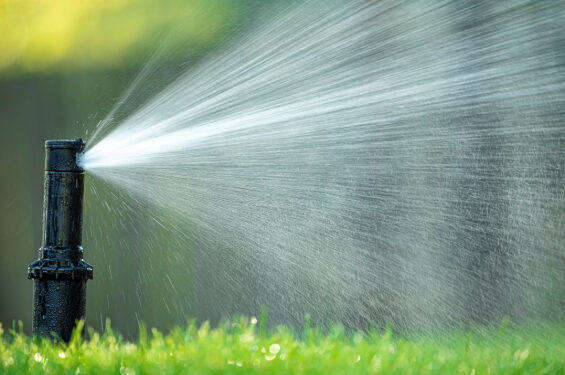
Ice dams may appear harmless – and may even look pretty – but they can cause damage to your home. Read on to learn how to remove ice dams and how to prevent them from forming in the first place.
What is an ice dam?
An ice dam is a wall of ice that forms at the edge of the roof, typically at the gutters or soffit. Aptly named, they act as a dam for the water created by melting snow and prevent it from draining into the gutters. When this is the case, water will find its way into your house.
What causes ice dams?
For an ice dam to form, there must be snow on the roof. The higher surfaces of the roof’s surface must be above 32°F, and lower surfaces below 32°F. A dam will grow on the parts of the roof that are below freezing.
Poor ventilation and temperature control in the attic can also cause ice dams. Excess warm air in the attic can cause the snow on the roof to melt regardless of the temperature outside. Recessed lighting, skylights, complex roof designs and heating ducts in the attic increase the chances of an ice dam developing.
What are signs that you have an ice dam?
Having icicles doesn’t necessarily mean your roof is harboring an ice dam. Small icicles are usually harmless. The telltale sign to watch out for is seeing ice where it shouldn’t be, like on the edges of your roof, through your soffit, or behind your gutters.
If not addressed early, ice dam damage can be significant. The water ice dams let into your house damages insulation, rendering it ineffective. When the water freezes it can cause structural damage, lifting shingles and pulling gutters off the house. Ultimately, ice dams create a cycle of dampness, freezing and mold that cause damage to your home and your health.
How to prevent ice dams:
Properly winterizing your roof is for ice dam prevention. Consider these precautions.
- Have your gutters cleaned before winter.
- Keep your attic well ventilated, so it stays cold, and properly ventilate the roof and eaves.
- Insulate the attic floor to reduce the amount of heat rising from within the house.
- Rake or shovel snow off the roof before it freezes or hire a professional roofer to clear your roof.
- Create an air barrier between the house and attic with a foil-faced cover over an uninsulated attic hatch or whole-house fan opening.
- Install a water-repellent roof membrane.
Finally, before winter, check for any potentially dangerous heat sources, including uninsulated recessed ceiling can lights, uninsulated folding attic stair openings, heating ducts, furnace or water-heating equipment and inadequate bathroom vent fans. Make sure to remedy these issues before the weather turns cold.
How to remove ice dams:
If an ice dam has formed, here are immediate steps you can take to help prevent further damage:
- Apply calcium chloride or another ice-melting product onto the ice.
- Place a box fan in the attic and direct it at the underside of the roof where water is leaking in. The cold air will freeze the water.
- If your roof is flat or has a low slope, use a roof rake to sweep off the snow.
- Have a professional remove the dam with high-pressure steam or other specialized methods.
When it comes to ice dam removal or repairing damage on your roof, always consider your personal safety.
If your home is prone to ice dams, it may be time to consider a new roof. Learn more about types of roofs and which one might be a good fit for your home.



